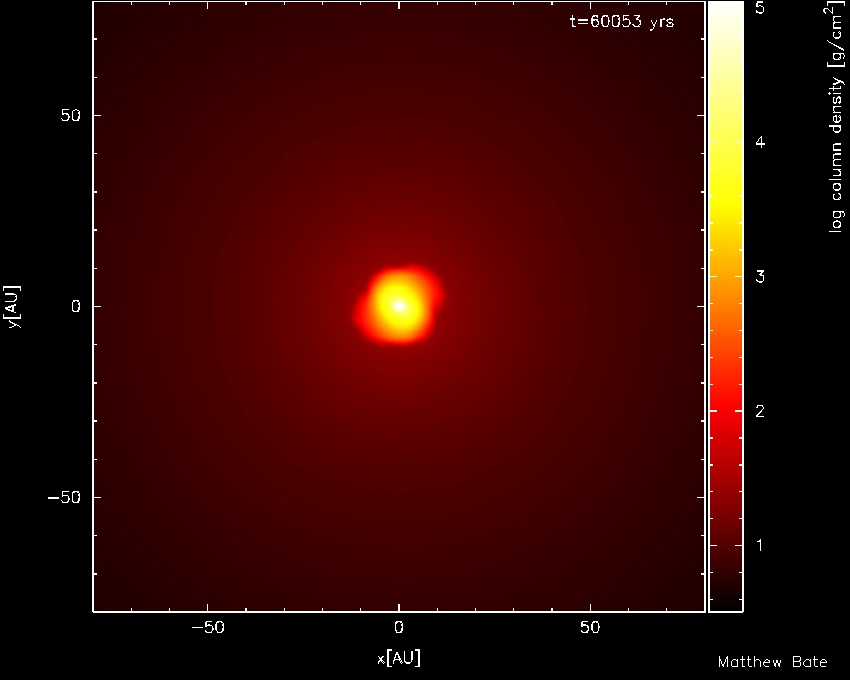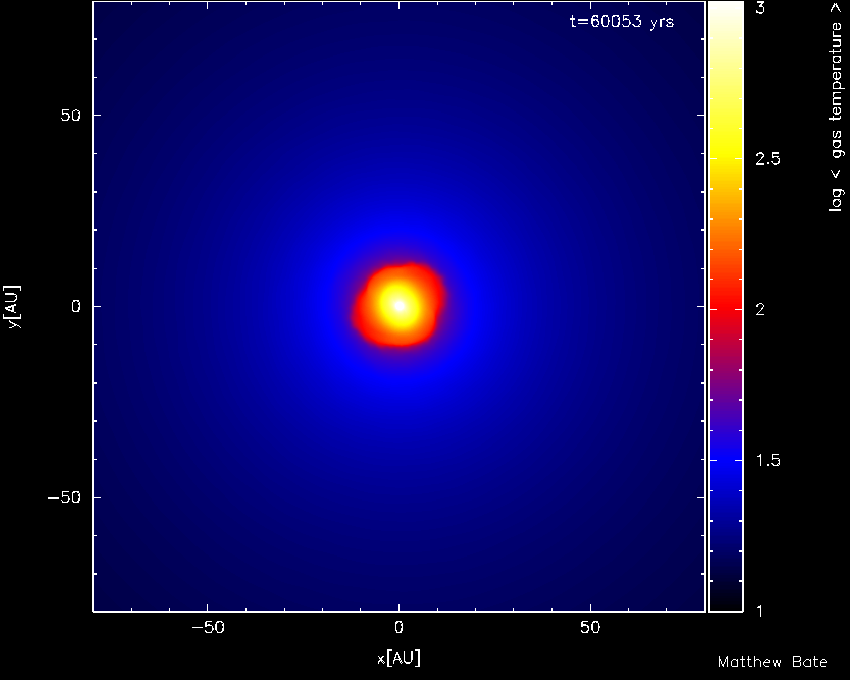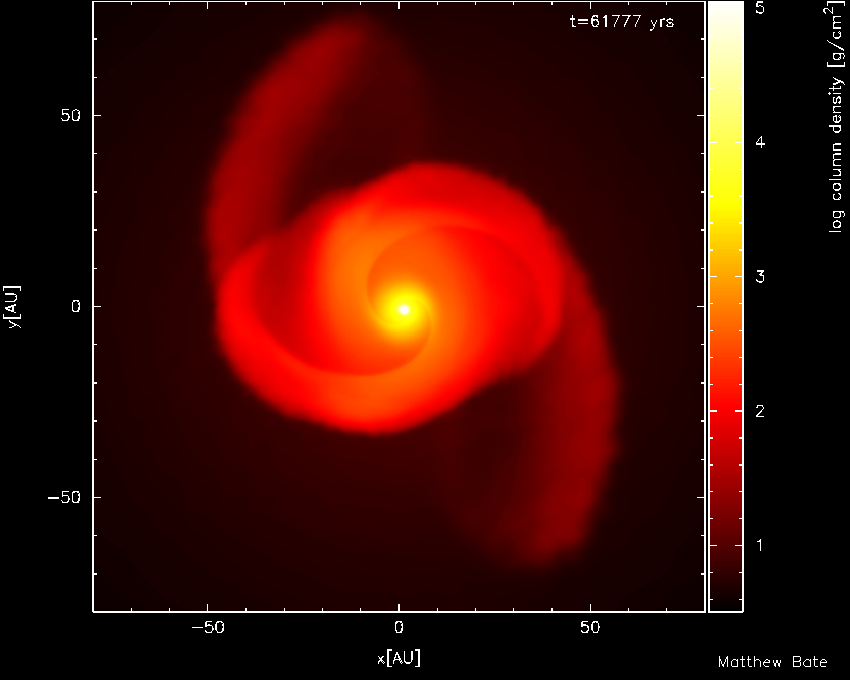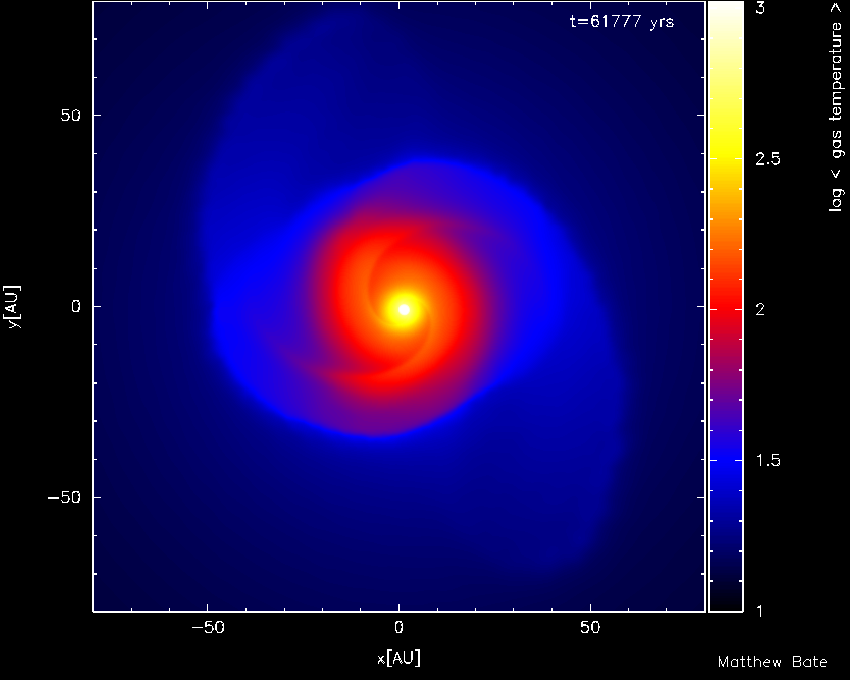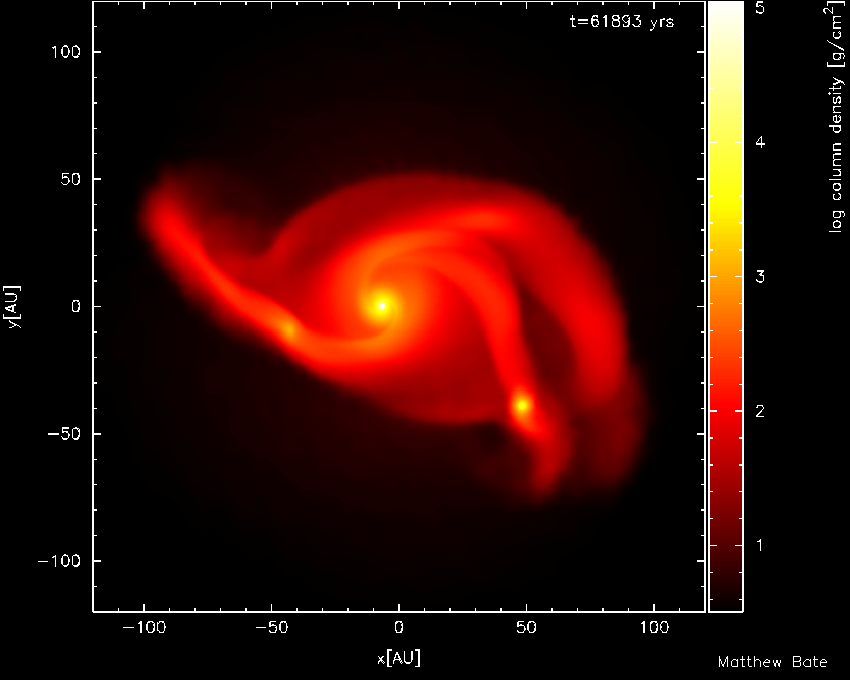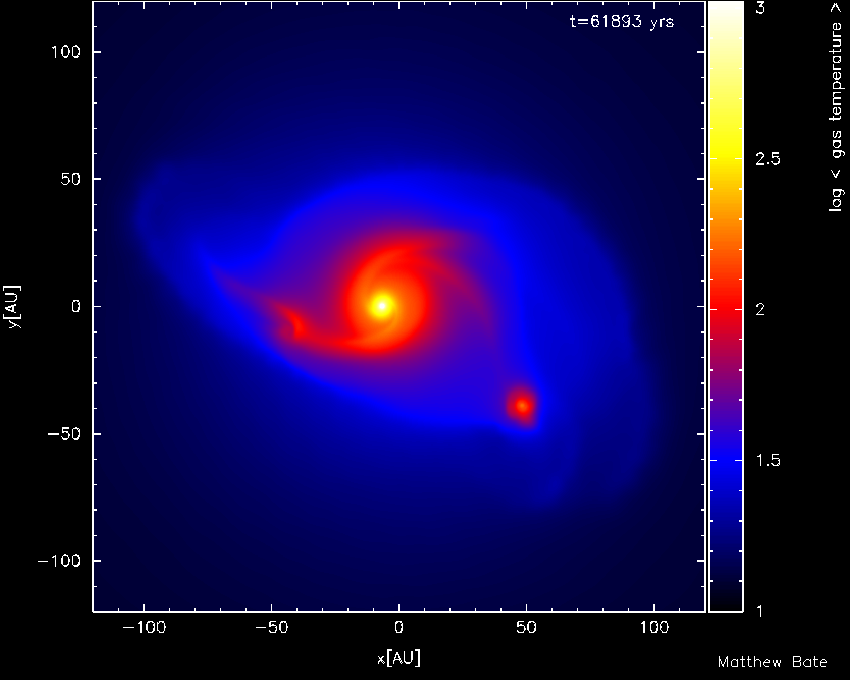The formation and evolution of pre-stellar discsMatthew R. Bate This series of radiation hydrodynamical calculations follows the collapse of one solar-mass molecular cloud cores all the way to the formation of the stellar core. This project was a follow-up to my 1998 barotropic calculations which discovered that rapidly-rotating first hydrostatic cores could develop rotational instabilities and evolve into large discs before the stellar core formed within them. Five different cases are given below. These have identical initial conditions, except that the initial cores are rotating at different rates. Molecular cloud cores that are rotating slowly collapse to form first hydrostatic cores (Larson 1969) that are 5-10 AU in radius. As these accrete infalling gas and radiate thermal energy their central temperatures eventually reach 2000 K. Molecular hydrogen dissociates within the first core, absorbing energy and leading to a collapse within the first core to produce a stellar core. This stellar core initially has about twice the radius of the Sun, but a mass of only a few Jupiter massses. For more rapidly-rotating initial conditions, the first core is highly oblate and unstable to dynamical rotational instabilities that deform it into a bar. The ends of the bar lag behind, and a spiral structure develops. Angular momentum is transported outwards due to gravitational torques, and a large 50-100 AU radius pre-stellar disc is produced before the central temperature reaches 2000K and the collapse to form the stellar core occurs. For even higher initial rotation rates, fragmentation will occur into a binary or multiple system. With the axisymmetric initial conditions used here, this occurs via the fragmentation of a pre-stellar disc or, for very high rotation rates, via the formation of a torus-shaped first core which breaks up into multiple fragments. Each of these fragments evolves as a more slowly-rotating first core. AnimationsSimulation & visualisation by Matthew Bate, University of Exeter unless stated otherwise. The movies below were produced using the SPLASH software written by Daniel Price to visualise SPH simulations (Price 2007). There are two animations for each calculation. The first uses my typical red-yellow-white colour scheme to visualise the column density through the star-forming cloud (parallel to the rotation axis). The second uses a black-blue-red-yellow-white colour scheme to visualise the temperature (mass weighted) through the molecular cloud core. Calculation with beta=0.001:In this calculation the initial molecular cloud core is rotating slowly enough that the first hydrostatic core remains (almost) axisymmetric. There is only a very weak bar mode instability visible, and the radius of the first core only grows to approximately 10 AU. This calculation was performed using 3 million SPH particles.
Calculation with beta=0.005:In this calculation the initial molecular cloud core is rotating slowly quickly enough that the first hydrostatic core becomes dynamically rotationally unstable. It deforms into a bar, the ends of the bar begin to lag behind, angular momentum is transported outward via gravitational torques, and a pre-stellar disc is formed with a radius of approximately 60 AU before the stellar core is formed. This calculation was performed using 3 million SPH particles.
Calculation with beta=0.01:Similar to the previous case, the initial molecular cloud core is rotating slowly quickly enough that the first hydrostatic core becomes dynamically rotationally unstable. However, in this case, the instability is stronger. The pre-stellar disc that is formed has a radius approaching 100 AU, and the end of one of the spiral arms manages to collect enough gas to form a self-gravitating fragment. All of this evolution occurs before the stellar core forms (which occurs at the end of the animation). This calculation was performed using 1 million SPH particles.
Copyright: The material on this page is the property of Matthew Bate. Any of my pictures and animations may be used freely for non-profit purposes (such as during scientific talks) as long as appropriate credit is given wherever they appear. Permission must be obtained from me before using them for any other purpose (e.g. pictures for publication in books).
Notes on formats: Refereed Scientific Papers
"Collapse of a molecular cloud core to stellar densities: the formation and evolution of pre-stellar discs" Technical DetailsThe calculations model the collapse of 1 solar mass molecular cloud cores that are 4700 AU in radius. The ratio of thermal energy to the magnitude of the gravitational energy is 0.54. The free-fall time of the clouds is 56,500 years. The clouds rotate such that they have ratios of rotational energy to the magnitude of the gravitational potential energy of beta = 0.0005, 0.001, 0.005, 0.01, and 0.04. The calculations resolve more than 7 orders of magnitude in length scale and 17 orders of magnitude in density. The calculations were performed using a parallel three-dimensional smoothed particle hydrodynamics (SPH) code using 1-3 million particles on the University of Exeter Supercomputer. Copyright: Matthew Bate, University of Exeter.
|

